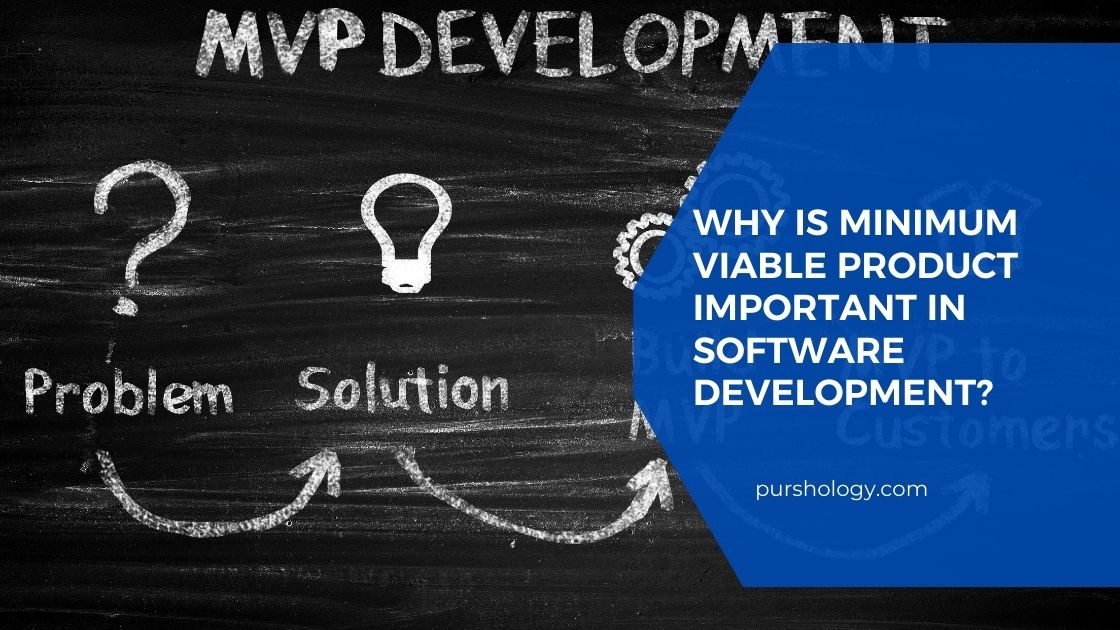Each business begins with a concept for a product—be it building it on your own or buying software application development services. Some of them function, while others do not. The most well-known and widely utilised goods or applications you use today did not have an easy start. They, too, have had to overcome significant obstacles in order to increase revenues.
It’s unfortunate that the cost and time required to build and market a successful software product are frequently underestimated. Skilled Developers set out to produce a world-class product that would propel them to good positions.
However, they occasionally worry about losing sight of the product’s initial objective, delaying delivery deadlines and wasting time on costly problem patches.
This is where implementing a minimal viable product (MVP) becomes critical. You must be wondering, what is MVP in software development? Well, MVP is used by software development service providers that enables developers to continuously test, refine, and expand their robust solutions.
Here, I’ll walk you through the benefits of constructing an MVP and the simple steps needed to get started.
Table of Content:
- Overview
- MVP In Software Development: A Brief Introduction
- The Advantages Of MVP Development
- Successfully Obtaining Stakeholder/Investor Buy-In
- Increased Release Time
- Concentration On Core Functionality
- The MVP Helps Steer The Product Vision In The Proper Direction
- Your Product Accomplishes Exactly What It Demonstrates
- More Economical
- Test Market Requirements
- Enhances Teams’ Learning Curve
- Significant Takeaway
MVP In Software Development: A Brief Introduction
Before we get into the requirement and advantages of developing an MVP, let’s define what we’re talking about. Contrary to popular belief, an MVP is neither a wireframe, an early proof of concept, nor a technique. In a genuine sense, it’s a release suitable for customers: but one that can be cut down to the bare essentials if necessary.
Simply said, an MVP is a product that is devoid of frills or might be described as a minimum product. It is the bare minimum set of core features required to meet your product’s basic functioning.
It also assists you in gaining market popularity quickly and for a little investment of time and money.
Consider bread with butter as your MVP and bread with cheese, sauce, and veggies as your finished product.
When seen as a mentality, MVP is essentially a scientific approach to product introduction. This technique is founded on the principle of build-measure-learn. The fundamental elements that contribute to your product’s viability are equal to your Minimum Viable Product.
The Advantages Of MVP Development
1. Successfully Obtaining Stakeholder/Investor Buy-In
Often, businesses rely on stakeholder or investor buy-in to acquire funds and have a mobile project approved. The key to gaining this buy-in is to instil trust in the product being presented and it’s capacity to deliver on its promise.
Creating an MVP is an excellent means of gaining this buy-in since it enables businesses to determine if their concept will work before approaching investors, guaranteeing that when they do, they will have a strong business case demonstrating the product’s real market viability.
Additionally, an MVP is a fully functional product that entrepreneurs can demonstrate to investors. Finally, stakeholders want to invest in successful products, and an MVP not only establishes a product’s merits, but also provides a physical product for stakeholders to see and use, and if the buy-in is approved, a product that can be planned to launch into the market without interested parties having to wait months to see a value for money.
2. Increased Release Time
It is frequently thought that consumers prioritise the product that first enters the market. At times, it is irrelevant if your product solves a problem or meets client requests; the sooner your product reaches the user, the better.
MVP development takes just a few months, which expedites the release of your product and boosts its chances of success in a changing market.
The advantages of MVP development include the creation of a clean, straightforward, and fully working product that will be launched shortly.
3. Concentration On Core Functionality
The MVP technique enables you to get clarity and focus on your product’s key functionality. It enables you to evaluate your company concept at a minimal cost and in a short period of time. The bulk of product owners is prone to over-engineering their products even before they reach the market. It’s quite easy to lose focus on the exact problem you’re attempting to tackle when you add a large number of key features.
4. The MVP Helps Steer The Product Vision In The Proper Direction
The MVP stage is often regarded as the most critical and vital step of the development process. Businesses frequently have anticipated objectives and conditional expectations for their projects. All of this stays theory with regard to comparable competition products until it becomes transparent and validated with real data, which is where MVP comes into play.
MVP enables a full-scale test of the product in its simplest form in real-world market circumstances. It enables the product’s engagement with the target audience to be tested, experimented with, and understood. Additionally, it aids in the measurement of user engagement with a specific emphasis on final goals and desires.
Specifically, the MVP identifies what works and what does not, what can be removed and what can be added, and most importantly, what can be improved.
In particular ways, the MVP guides product development and eventually clarifies the product vision.
5. Your Product Accomplishes Exactly What It Demonstrates
By starting with a minimal viable product, you can keep your team focused on the software’s fundamental capabilities and value. Specifically, MVP offers organisations with clear signals about the product’s functionality, what can be added, and most importantly, what can be enhanced.
Creating an MVP enables you to avoid including superfluous or undesired features in your initial product. This implies that your new consumers will receive a straightforward product that does precisely what it is advertised to do.
The earlier edition of your programme allows you to do market research.
6. More Economical
Cost-effective product development is seen as one of the MVP’s most significant advantages. Developing the first versions of your product with a minimal set of functionality is a simple and cost-effective method. Additionally, investing less in the early phase allows you to save money for future enhancements.
Million-dollar firms such as Facebook, Instagram, Snapchat, Spotify, Airbnb, Uber, Zappos, and Dropbox were initially founded as MVPs.
As firms gain more users and amass more data, they can now invest more aggressively and wisely.
7. Test Market Requirements
Prior to introducing a product, it is critical to determine whether the product will succeed in the market. MVPs assist in testing market demand at the first phase of an idea’s development to assure its success. You must determine whether there is a market for your product in your intended market. Due to the fact that you cannot invest your full cash solely on an assumption.
However, by assessing the MVP’s success, you may determine whether to continue with the idea, enhance it, or radically pivot based on the data.
MVP development enables firms to reach the actual market more quickly, allowing you to field-test your ideas and gather customer feedback on the whole product.
8. Enhances Teams’ Learning Curve
When you deploy the initial version of your MVP, you will have a firm grasp of the customer’s behaviour and patterns. However, releasing your product in its MVP form provides your development team with several opportunities to get in-depth knowledge about your product. Thus, employ the consumer feedback collected from users to improve and enhance the product’s next versions.
The MVP approach is more of an iterative process. The minimum viable product helps your team to experiment with and embrace iterative development methodologies such as Agile, which can result in the addition of more value to your product throughout development.
Significant Takeaway
A minimum viable product (MVP) is a procedure that is oriented toward testing. Businesses utilise this technique to identify their most risky assumptions, design the smallest possible experiment to test them, and then use the results to steer development.
The critical message here is that a Minimum Viable Product enables businesses to start small and iteratively grow into a more refined product – all while leveraging user knowledge to make the best product decisions. The product grows with each release version to optimise ROI and progress toward a fully developed application.




